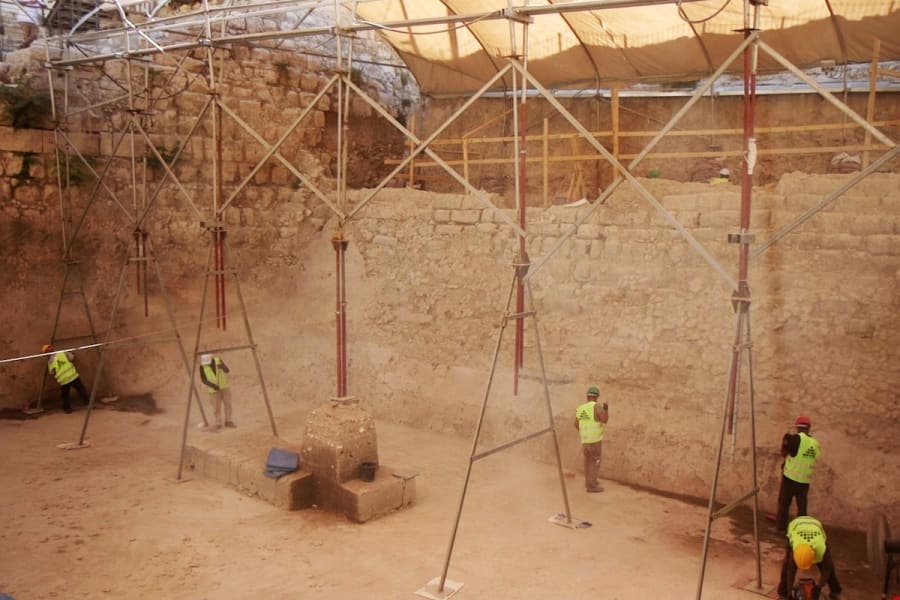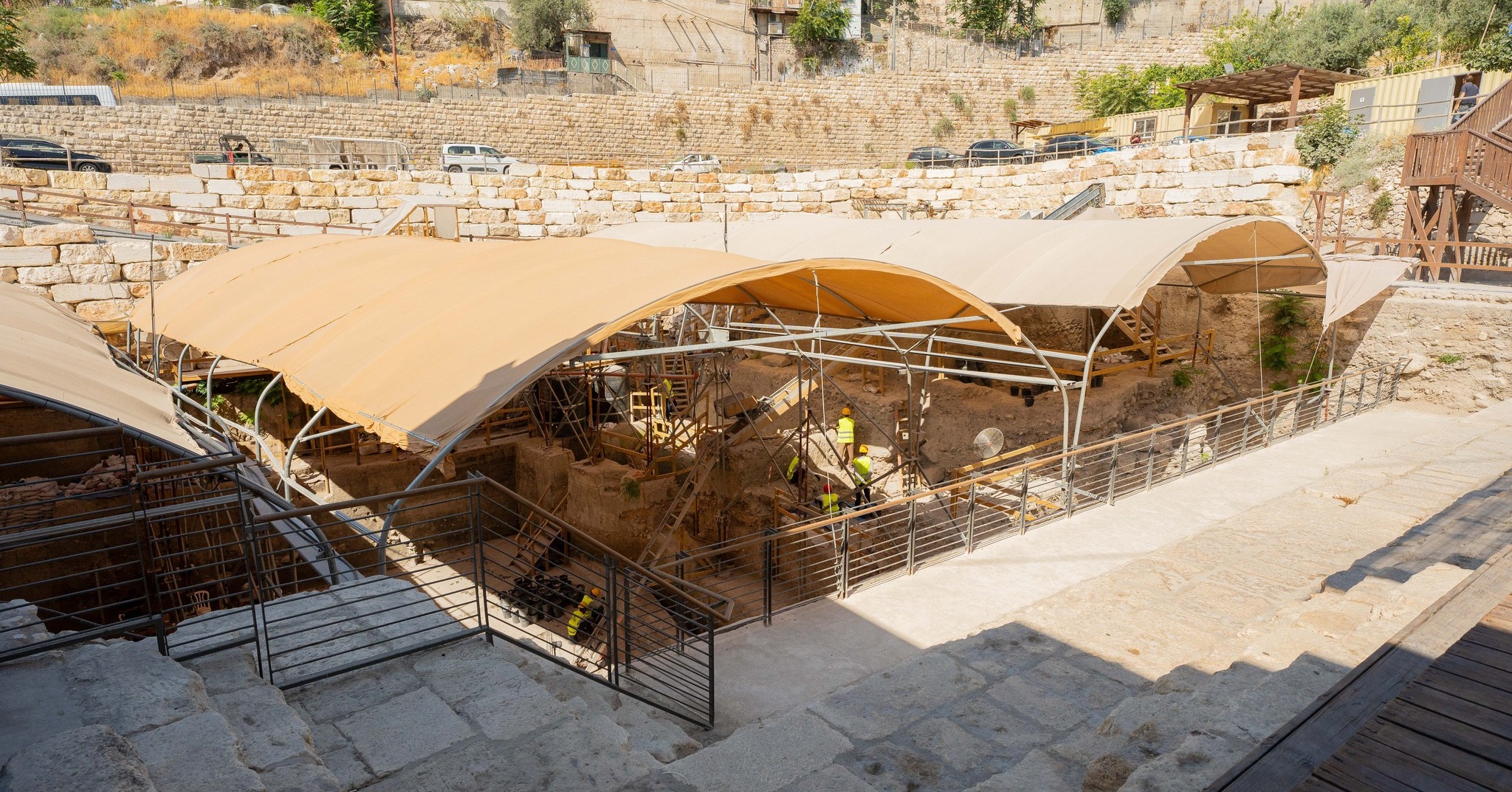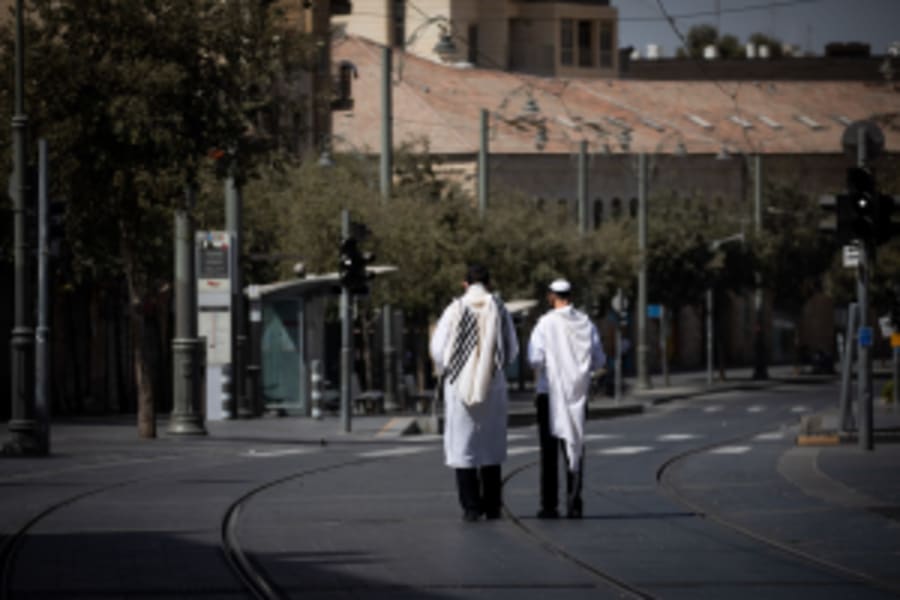New dating of dam discovered in City of David opens floodgate of questions about Jerusalem’s history

New research published on Monday in the "Proceedings of the National Academy of Sciences" (PNAS) in the United States, has caused a stir among historians and archaeologists studying the waterworks of ancient Jerusalem.
Scholars have long believed that Jerusalem was a much smaller settlement with far less influence than the Bible portrays, so the new dating of a large dam discovered in the City of David has led to a flood of new questions regarding why it was constructed at that time.
As part of ongoing excavations in the City of David, archaeologists uncovered the remains of a dam over 11 meters (36 feet) high and more than 19 meters (62 feet) long, built to block water from the Gihon stream from flowing eastward into the desert beyond Jerusalem.
One of the walls slopes to effectively hold back the pressure from a large volume of accumulated water while the other is vertical. The structure is almost 10 meters (32 feet) wide, according to the archaeologists, indicating that it was constructed to contain a considerable amount of water. The discovery of the dam itself is not new, but a far more accurate date has been put forward for the structure.
Previously, it was thought to have been built any time from around 700 B.C. as part of siege preparations by Hezekiah, to Hasmonean and Herodian times in the first century B.C. Now, according to more accurate dating methods, researchers have dated the structures back to the time of Kings Joash and Amaziah in the 8th century BC.

The new dating makes the dam 2,800 years old, about a hundred years earlier than the earliest previous estimate. Experts are now grappling with the implications of a structure whose scale suggests water was being collected for a much larger area beyond the City of David compound.
Itamar Berko of the Israel Antiques Authority stated, “It's not what you find, it's what you find out.”
Together with Filip Vukosavović, Berko revealed that the dam was built during 805-795 B.C., according to the findings of Johanna Regev, Elisabetta Boaretto and their team at the Dangoor Research Accelerator Mass Spectrometer Radiocarbon Lab at the Weizmann Institute of Science.
The researchers collected four samples of perishable organic matter including straw, which had been used in the mortar, to give the most accurate dating. All four gave results falling between the years 800-795 B.C.
“Using well-established microarchaeological sampling methods, we reached a precise radiocarbon date of 800 BC for the Siloam Pool’s monumental water dam in Jerusalem,” they reported.
Through the use of the dam and channels, water from the Gihon Spring was gathered and redirected along with rainwater to create a reservoir in the Pool of Siloam. Experts are asking why such a dam would have been necessary in the City of David, long before many thought Jerusalem was a large and substantial city.
Prof. Boaretto presented the dilemma they were trying to solve: “Many of the buildings related to water were dated to the same time. When we saw this, the question came, of course, why?”
A period of low solar activity, or the Homeric Grand Solar Minimum, as it is known, began around the year 800 B.C., bringing less rain to the Levant with periodic downpours and flashfloods. Regev, Boaretto and their team suggested in their report that this could help explain the drive to control and conserve Jerusalem's main water supply.
“This date is a critical link connecting several imposing waterworks constructed at that time,” their report stated, giving their hypothesis that the construction of the dam could have been due to unusual and extended dry periods of that era: “Climate data pointing to droughts and flash floods during the last decades of the 9th century B.C. provide a logical framework for the reasons behind such endeavors.”
Leading biblical archaeologist Prof. Israel Finkelstein of Haifa University suggested that the presence of the dam indicates that the reservoir may also have been serving a settlement larger than previously thought in that timeframe. A new quarter was constructed as the City of David expanded at some point, but scholars previously believed the development had taken place much later. "I see no logic in investing in this project had it not been for the need to bring water to the new quarter," Finkelstein said.
Adding to the mystery is the fact that the Pool of Siloam (where Jesus, many years later, would heal a blind man according to John 9:1-12) was not protected behind any fortification at the earlier date that has now been put forward. This suggests the dam and pool were not merely a defensive strategy against an Assyrian siege.
The waterworks of ancient Jerusalem, including Hezekiah’s Tunnel, the Pool of Siloam, a huge moat, and this large dam, have given experts plenty to ponder as they try to piece together the city's history.

Jo Elizabeth has a great interest in politics and cultural developments, studying Social Policy for her first degree and gaining a Masters in Jewish Philosophy from Haifa University, but she loves to write about the Bible and its primary subject, the God of Israel. As a writer, Jo spends her time between the UK and Jerusalem, Israel.
You might also like to read this:
















